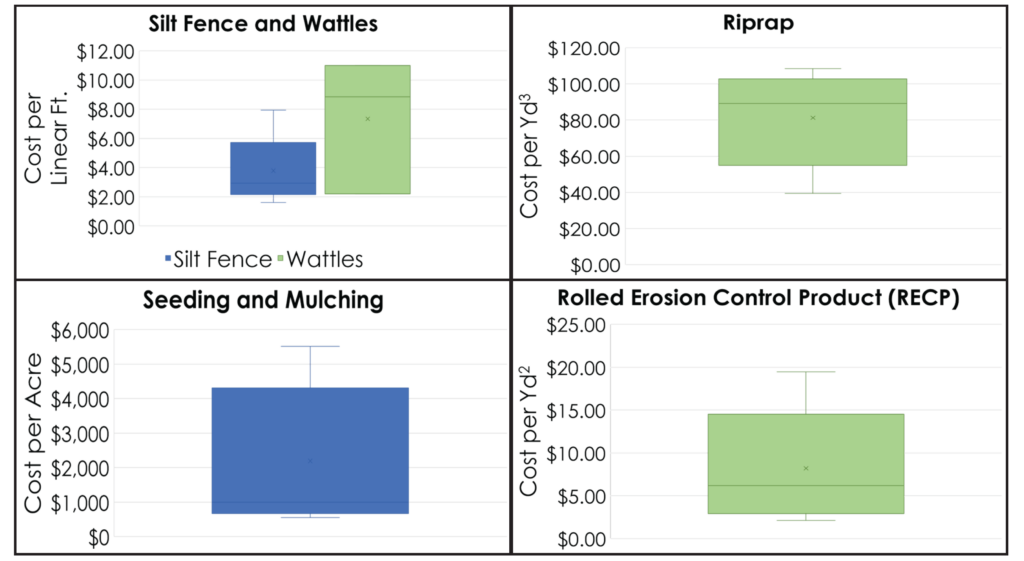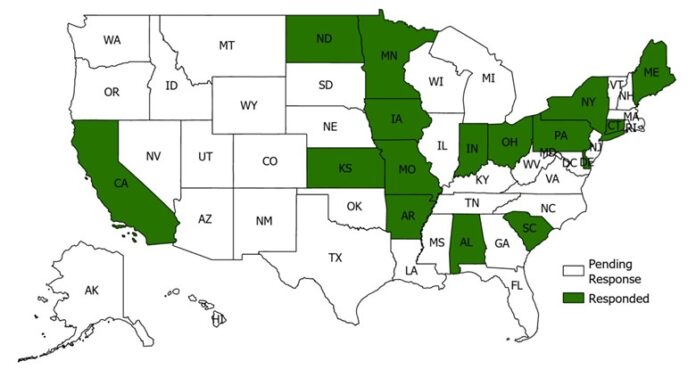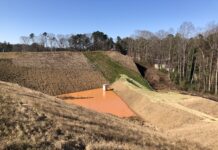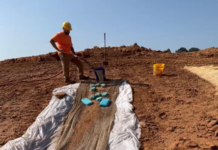Since 1992, the Clean Water Act has required construction sites to obtain a permit that includes the development and implementation of stormwater pollution prevention plans (SWPPPs) to identify and mitigate potential pollutants prior to offsite discharge.1
During earthwork construction, bare soil is continually exposed and manipulated, leaving sites susceptible to rainfall-induced erosion. Consequently, sediment is the primary potential pollutant of concern during construction, which is mitigated through a temporary erosion and sediment control (ESC) plan.
These plans include the design, installation and maintenance of site erosion and sediment control practices, such as rolled erosion control, sediment barriers and ditch checks throughout construction phasing, and the plans must comply with the local, state and federal stormwater permitting requirements.
As a result, the material, installation, quantity and investment required by ESC plans are locationally variable. Once construction projects have reached final stabilization, ESCs are supposed to be removed prior to permit termination; however, these temporary practices are often forgotten once construction is completed.
In recent years, there has been discussion about the quantity of synthetic materials such as silt fence and plastic reinforcement netting used for ESCs that often persist in the environment long after construction is completed.2,3,4 While there is a need to practice good ESC measures for soil and water conservation, it is important to do so responsibly and not create an additional source of pollution.
The United States Fish and Wildlife Service has highlighted the negative impacts that abandoned ESCs can have on the environment and wildlife it supports, including wildlife entanglement, ingestion and degradation into microplastics.3 In the United States, state departments of transportation (DOT) are major facilitators of construction and maintain a set of ESC standards, and federally, the United States DOT has prioritized climate and sustainability.5 As a result, several states have shifted to prioritizing the use of natural ESC practices such as slash mulch berm and wattles in their SWPPS, over traditional synthetic practices.4,6,7
The objective of Oklahoma State University’s research is to compare the costs and environmental impacts of common ESC practices and use these metrics jointly to inform quantitative sustainable design in erosion and sediment control. To do so, a survey was distributed to 50 state DOTs to quantify the gaps related to the frequency of use and the investment in common ESC materials including silt fences, wattles and riprap in various ESC applications.
In addition, a life cycle assessment (LCA) is being conducted to identify the environmental impact of commonly used synthetic and natural-based practices from cradle-to-gate, which covers the time from resource extraction to production to delivery to store. These analyses will be combined to examine sustainability in the ESC design. The results from this study are anticipated to guide resource allocation and prioritization in ESC planning, implementation and research.
In 2022, the U.S. DOTs were contacted via an online survey to respond to questions about their stormwater permits and ESCs used by their respective agencies in the previous year. After providing survey consent, participants were asked four general questions about their permitting, inspections, cost and percentage of project cost spent on stormwater management.
The next two questions prompted participants to report on the average bid cost and quantity of different erosion and sediment controls used by their DOT. Responses including cost, quantity and units were left as open response and were standardized to a single unit for analysis. Sixteen states responded to the survey with varying participation for each question (Figure 1). DOTs from states that oversee their own permits reported 100 to 200 active construction stormwater permits in 2021. From the collected responses, construction stormwater contributed 2.7% of the total project cost. Additionally, the cost and quantity of sediment control systems including silt fence, wattle and riprap, were collected, as they can be used in several applications.
Overwhelmingly, states reported that silt fence is most widely used. States reported that seeding and mulching was the most common erosion control; however, four states also reported common use of rolled erosion control products. Presumably, rolled erosion control products were selectively used due to higher installed product cost compared to seeding and mulching.
Once costs were collected (Figure 2), the Iowa DOT and Oklahoma DOT standards and approved product lists were used to inventory the materials and quantities used in different ESCs. To enable comparisons between practices, system boundaries were created as follows:
- 100 feet (30.48 m) run of perimeter control.
- 8 feet (2.45 m) bottom width trapezoidal channel with 3:1 side slopes.
- 1 acre (0.40 ha) for erosion control.

The ESC materials for each system were identified using LCA software, Simapro, with the ecoinvent and U.S. Life Cycle Inventory databases (USLCI). The ecoinvent database was specifically selected because it spans the areas of energy supply, agriculture, construction materials, textiles and metals. The materials were examined as a system process to assess the environmental impacts from cradle-to-gate. Transportation was not included in the LCA, because construction sites vary in distance and accessibility from ESC distribution centers.
Once the material systems were identified, we used the Tool for the Reduction and Assessment of Chemical and other environmental Impacts (TRACI) to assess the environmental impacts. TRACI is a midpoint-oriented life cycle impact assessment methodology developed by the U.S. Environmental Protection Agency. The impact categories assessed using TRACI included ozone depletion, global warming, acidification, eutrophication, tropospheric ozone formation (smog), ecotoxicity, fossil fuel depletion and land use effects.8 A functional unit of 1 kg or 1 foot was used depending on appropriateness, to determine the impacts associated with each material.
The environmental impact was then normalized according to the quantity of material needed for a practice that was consistent with the study’s system boundaries. To assess the total impact of a practice, all the materials’ environmental impacts were added. For example, a silt fence perimeter control would include geotextile, stake (e.g., steel or wood), reinforcement and cable ties.
This research is ongoing. The goal is to inform quantitative sustainable design in ESC to promote responsible resource allocation and design.
References
- USEPA (1992). Final NPDES General Permits for Storm Water Discharges From Construction Sites. Federal Register Vol. 57 No. 175.
- USEPA (2022). BMP Fact Sheets. National Menu of Best Management Practices (BMPs) for Stormwater-Construction. Accessed July 2023. https://www.epa.gov/npdes/national-menu-best-management-practices-bmps-stormwater-construction.
- U.S. Fish and Wildlife Service (2022). Wildlife and Environmentally Friendly Erosion Control Materials. FWS.gov. Accessed July 2023. https://www.fws.gov/sites/default/files/documents/WLfriendlyErosionControl__final.pdf.
- Smith, C. and Letee, P. (2019). Plastics (synthetic fibers) in Erosion Prevention & Sediment Control Practices. October 3rd, 2019. Presentation. Accessed July 2023. https://www.house.mn.gov/comm/docs/d402ee9b-6c91-4955-bfc4-d141f1433ce1.pdf
- U.S. DOT (2023). Climate and Sustainability. Transportation.gov. Accessed July 2023. https://www.transportation.gov/priorities/climate-sustainability.
- Metz, V (2016). Wildlife-Friendly Plastic-Free Netting in Erosion and Sediment Control Products. Water Quality Factsheet for Permit Applicants. California Coastal Commission.
- University of RI, RI DOT, and RIDEM (n.d.). Soil Erosion, Runoff, and Sedimentation. Construction Site Fact Sheets.
- PRé Sustainability (2020). TRACI 2.1. SimaPro Database Manual Methods Library. Version 4.15.
About the Experts
- Cheyenne N. Mata, M.S., is a graduate student in the department of civil and environmental engineering at Oklahoma State University.
- Jaime C. Schussler, Ph.D., CPESC, is an assistant professor in the department of civil and environmental engineering at Oklahoma State University.













